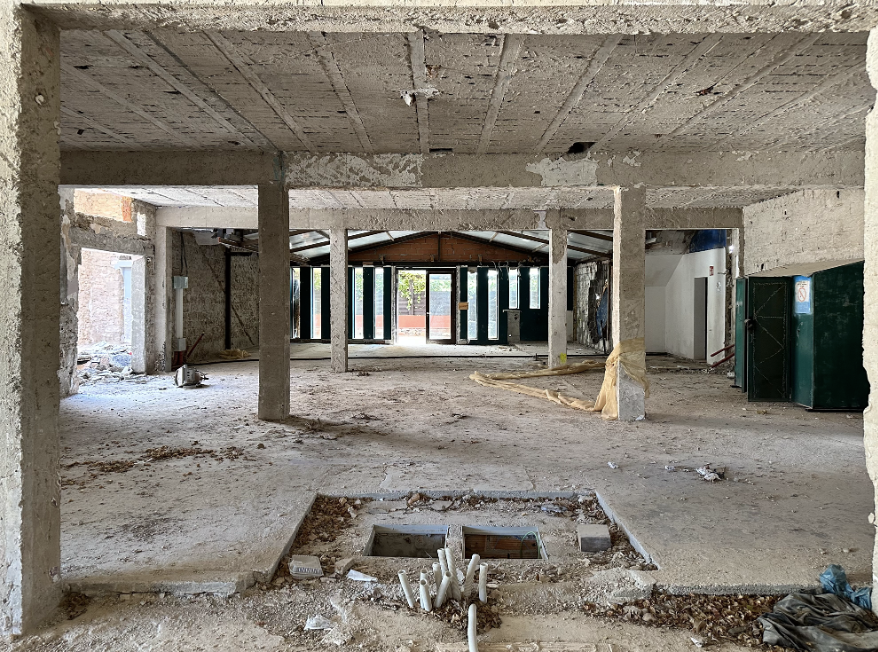By: Hannah Tsurkan
As the UK pushes towards its ambitious net-zero target by 2050, the construction industry stands at a critical juncture. Despite significant progress being made, our sector still contributes to 62% of all waste, with 32% of this still being sent to landfill.
The environmental impact of property development extends way beyond the initial construction phase though, with ongoing maintenance and energy consumption contributing to environmental degradation over the lifespan of the property.
One bone of contention for me personally, is the reliance on technology. Technology should enhance our processes, enabling us to work more economically as builders – but the buildings themselves should be designed for comfort, efficiency, and longevity, in the first instance.
Hi-tech systems may provide short-term comfort to clients, but these systems need maintenance: if they fail, they need to be fixed or replaced – they may even become obsolete in 15 years’ time.
It’s not uncommon to visit a site where there’s a button for everything, and it always brings me back to the music video for Lazy by X-Press 2 – I just don’t think it’s the silver bullet we think it is.
Rapidly advancing technologies, rising consumer demand for them, and shorter product life cycles have made e-waste (anything with a battery or plug) a prevalent source of environmental concern.
It’s no secret that consumption is out of control. The World Economic Forum reported that the consumption of natural resources, used in everything from air conditioning units to cladding, is projected to increase by 60% by 2060 compared to 2020.

As we look to the future, we need to focus on long-lasting, sustainable, low-tech solutions that prioritise the entire lifecycle of a building, from construction and design to maintenance and eventual deconstruction. Here’s how:
- Green building materials: Prioritising high quality, eco-friendly build materials such as bamboo, recycled metals, and reclaimed wood, while also ensuring ethical provenance. Using alternative foundations like screw piles to reduce soil disruption and concrete use, where possible, as well as using non-toxic paints.
- Do your research to avoid eco-friendly “gimmicks”: Sustainability is crucial for our future, but it’s essential to research your purchases to avoid falling for greenwashing. There are companies that claim to save trees, but they release really high emissions elsewhere. And this isn’t always evident on the surface.
- On-site reuse: Assess all materials on-site for potential reuse – even down to curtains that can be dry-cleaned and repurposed as cushion covers, or otherwise unusable wood that can be chipped down and used in compost.
- Responsible reuse / recycling: If breaking down cheaper materials like MDF to reuse in insulation, for example, the contaminants need to be removed first, as it contains formaldehyde, isocyanates and VOCs. If reuse is not plausible, it needs specialist recycling to avoid chemical leaching in landfill.
- Concrete recycling: If concrete cannot be reused in its solid state, it can be crushed down and repurposed to avoid it going to landfill.
- Furniture longevity: We always strive to source existing, vintage pieces and upcycle them, rather than making new. Where this isn’t possible, we ensure our furniture and furnishings are super high quality, have ethical provenance (materials not contributing to deforestation), and have been created for durability.
I went to 3 Days of Design in Copenhagen, looking for sustainable and mindful furniture companies, and came across UMAGE. We spoke at length about how they upcycle fabrics, and design pieces for assembly, disassembly and repair to extend the products lifespan. They also offer a 10-year guarantee, which most don’t!
- Energy-efficient design: Incorporating passive solar design, green roofs, and energy-efficient windows, also installing high-efficiency lighting, and kitchen appliances. Fathom Architects are a great example of how you can design mindfully; they do a lot of brilliant sustainable retrofits.
- Water conservation: Implementing rainwater harvesting, and greywater recycling where possible.
- Low-tech longevity: Focusing on building efficiently over reliance on high-tech solutions, ensuring that homes remain functional and efficient for decades without requiring extensive maintenance.
If we’re to genuinely make a difference in our industry, then our commitment to sustainability must go beyond surface-level greenwashing efforts, like installing energy-sapping HVAC systems and calling them “eco.”
By consciously sitting back and thinking how we can build for longevity, without relying on systems that end up in the landfill as soon as something newer comes along, we can genuinely contribute a cleaner, greener future. Being 100% sustainable isn’t the aim or remotely feasible, that would be living under a rock, drinking river water and cooking in sunlight, but making informed changes where you can is what counts.
Hannah Tsurkan is founder of London’s Agora Project Management, an end-to-end construction & development company that also acts as a premium interior design concierge. This isn’t just building mindful properties from the ground up, it’s finding those rare, vintage pieces for the final finishing touches.



